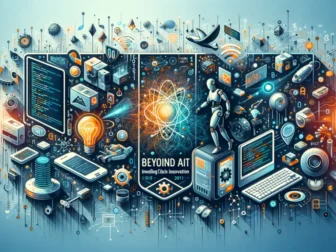Tag - ChatGPT
Blog , March 24, 2024 , AIoT Applications, ChatGPT, Future of IoT, Generative AI, Generative AI in IoT, IoT Code Generation, IoT Innovation, Robotics Control, Social IoT Devices
Blog , March 1, 2024 , AGI Development, AI, ChatGPT, Future of IoT, GPT, OpenAI, Sora
ChatGPT is an advanced AI chatbot designed for engaging text-based conversations, built by OpenAI using GPT-3 technology.
ChatGPT is an advanced AI chatbot designed for engaging text-based conversations, built by OpenAI using GPT-3 technology.
ChatGPT is an artificial intelligence chatbot developed by OpenAI, based on the Generative Pre-trained Transformer 3 (GPT-3) architecture. GPT-3 is one of the most sophisticated language processing AI models available, renowned for its ability to generate human-like text. ChatGPT harnesses this power to engage in conversational exchanges, answer questions, and perform a variety of language-based tasks in a manner that can sometimes be indistinguishable from human interaction.
The technology behind ChatGPT is grounded in machine learning and deep learning, specifically using transformers, which are neural network architectures that have proven to be highly effective in understanding and generating natural language. GPT-3 was trained on a diverse range of internet text, which allows ChatGPT to respond to prompts with information and context that span numerous subjects and domains.
One of the key strengths of ChatGPT is its flexibility. It can converse on a wide array of topics, from simple chitchat to complex technical discussions. It can assist with educational purposes, such as explaining scientific concepts or assisting with language learning. In the business realm, ChatGPT can function as a customer support agent, providing users with immediate and accurate responses to their inquiries. Furthermore, it can be integrated into various platforms like messaging apps, virtual assistants, or customer service tools, enhancing user engagement and experience.
Despite its impressive abilities, ChatGPT does have limitations. It sometimes generates responses that can be inaccurate or nonsensical, especially when dealing with misinformation or when the input is ambiguous. This is due in part to the fact that it generates responses based on patterns in the data it was trained on, without true understanding or access to real-time information. The AI’s knowledge is also limited to its training data, which means it may not be up-to-date with the latest events or developments post-training.
OpenAI has been continuously working to mitigate these limitations. For example, they’ve implemented safeguards to reduce the likelihood of the model generating harmful or biased content. However, the responsibility also lies with users to critically evaluate the information provided by ChatGPT and use it judiciously.
The ethical considerations surrounding technologies like ChatGPT are an area of ongoing discussion. Issues such as privacy, consent, and the potential for misuse in generating misleading or harmful content are paramount. As AI continues to advance, it’s crucial that developers and users alike remain vigilant about the ethical use of these powerful tools.
Overall, ChatGPT represents a significant stride in natural language processing and AI’s potential to augment human capabilities. Whether it’s through automating mundane tasks, providing entertainment, or aiding in education and research, ChatGPT’s influence is expected to grow as its technology becomes more sophisticated and integrated into our daily lives. As with any emerging technology, it’s essential that its development and deployment are guided by a framework that prioritizes ethical considerations, accuracy, and the betterment of society.

